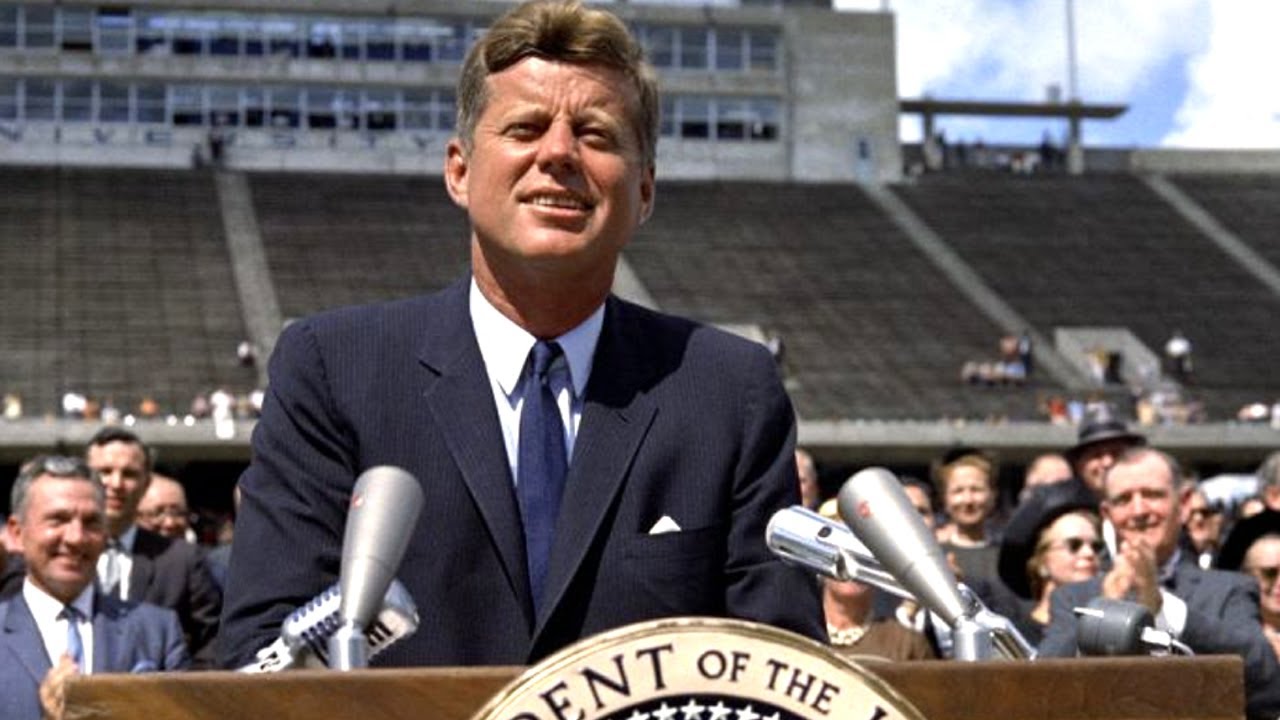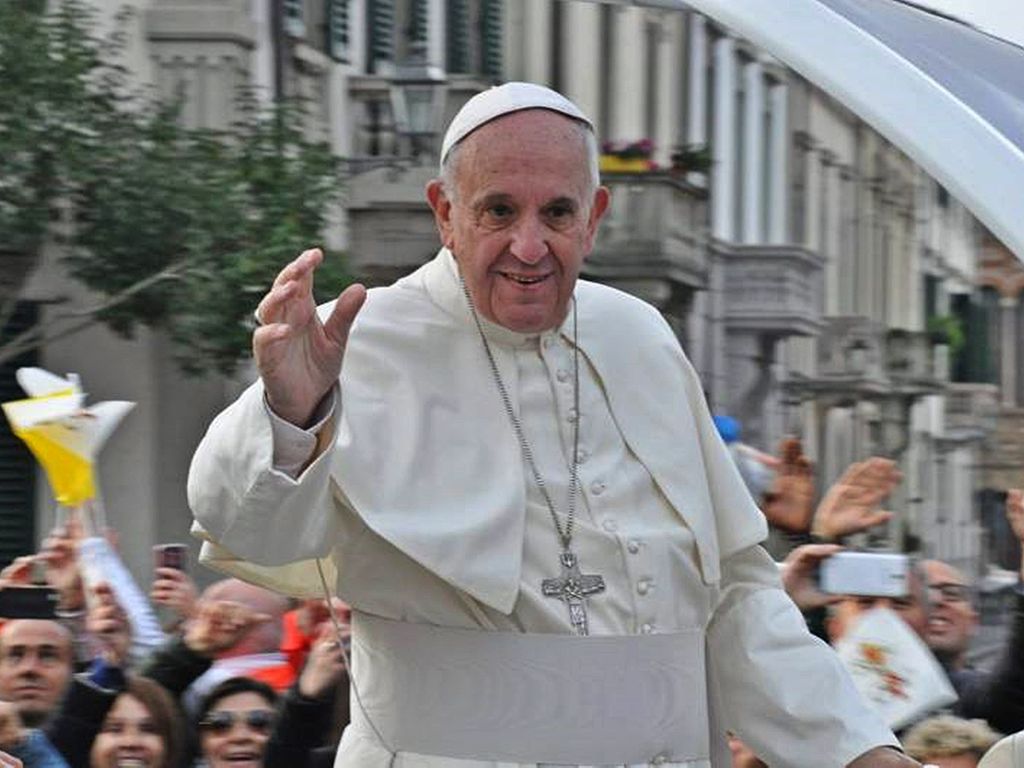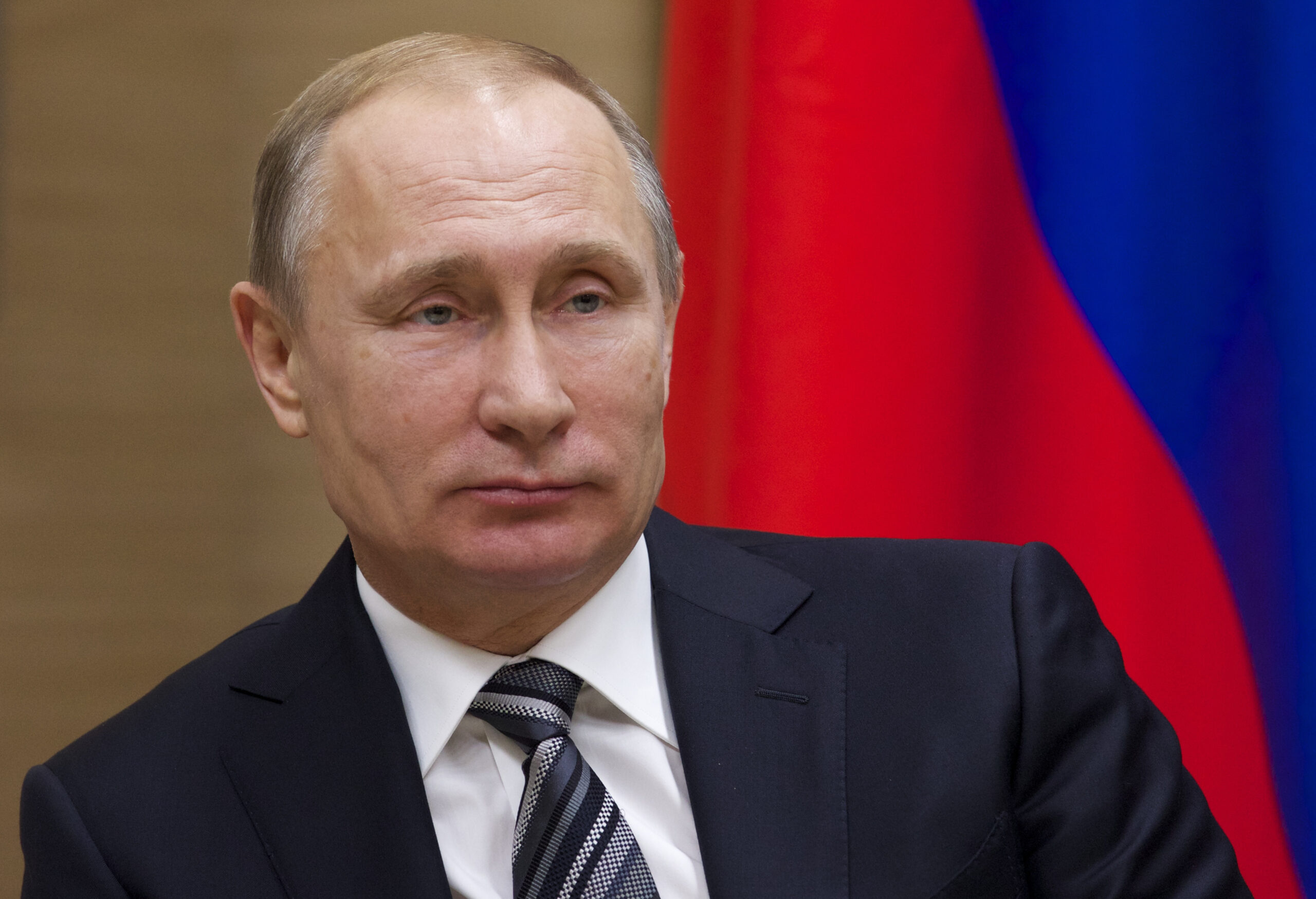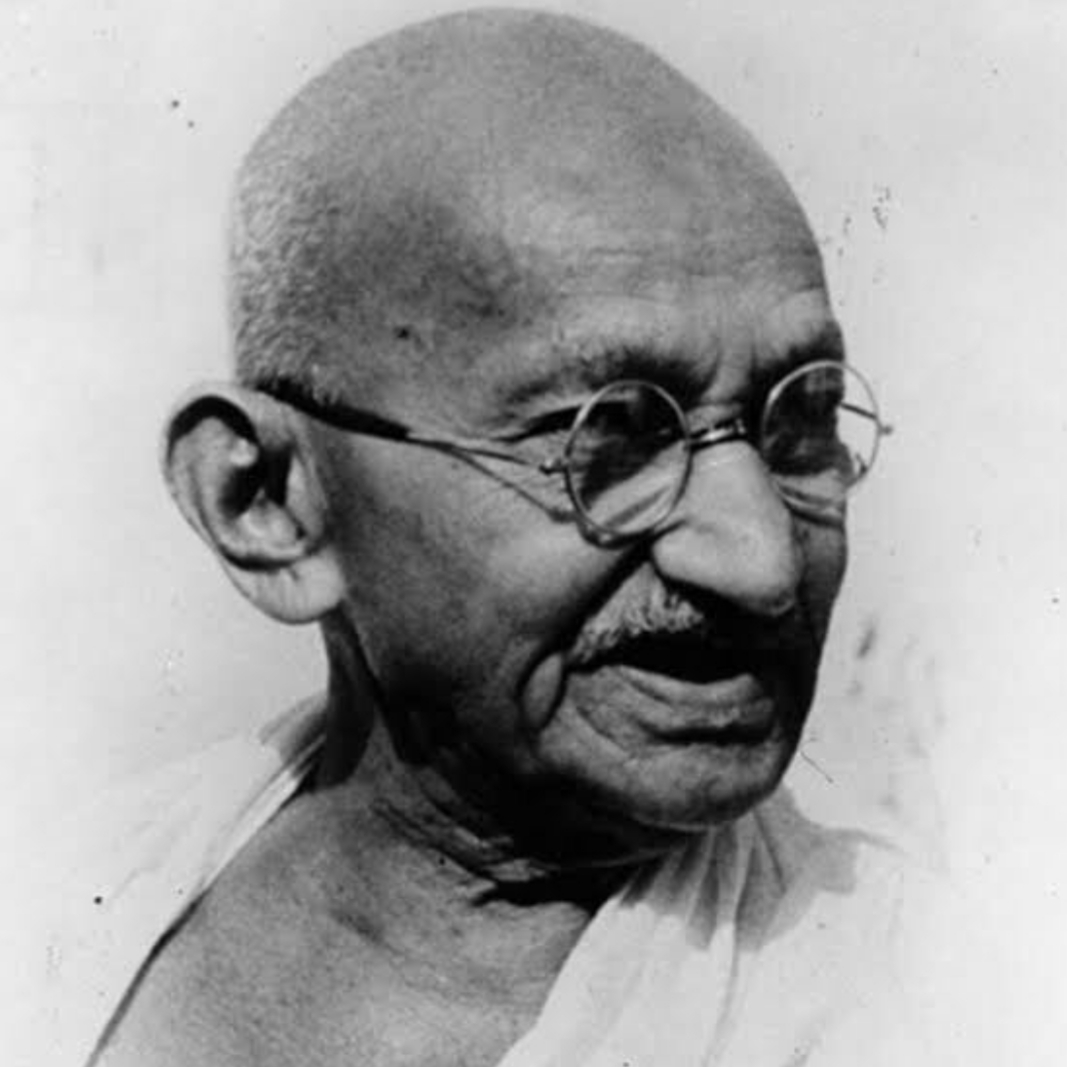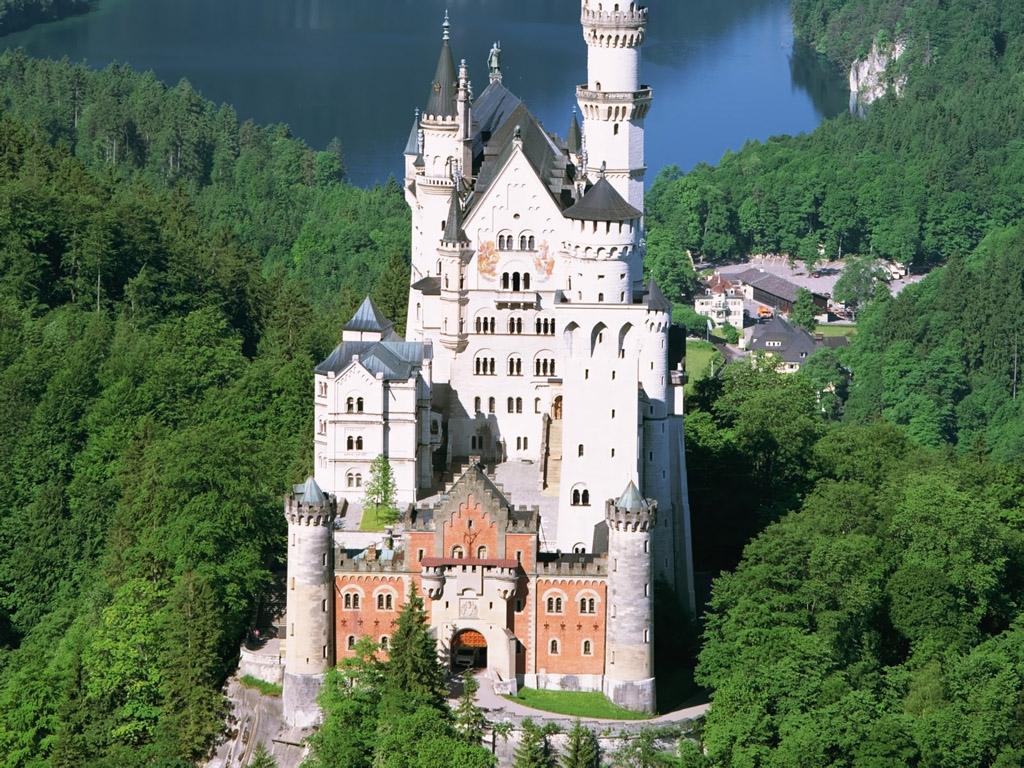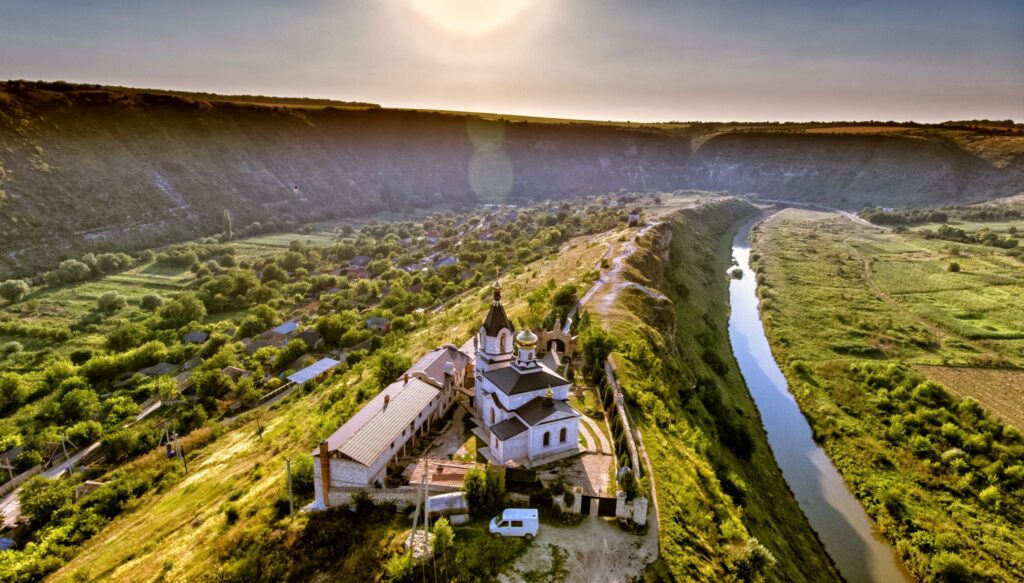World Leaders
Pope Francis – The People’s Pope
Pope Francis has become known as “The People’s Pope” since his election in 2013, and it’s easy to see why. With a commitment to humility, compassion, and social justice, he has captured the hearts of people around the world.
As the head of the Catholic Church, Pope Francis is one of the most photographed personalities globally. His charisma and warmth have made him an inspiration to millions, and his message of love and acceptance resonates across cultures and borders.
Here are some fascinating facts about Pope Francis that make him a standout among world leaders:
- Pope Francis was born Jorge Mario Bergoglio on December 17, 1936, in Buenos Aires, Argentina. He chose the name Francis after Saint Francis of Assisi, known for his simplicity and love for nature.
- Before becoming Pope, Bergoglio was a Jesuit priest and served as the Archbishop of Buenos Aires from 1998 to 2013.
- Pope Francis is the first Jesuit Pope in history and the first Pope from outside Europe since the Middle Ages.
- He has been instrumental in promoting environmental awareness, climate action, and social justice through various initiatives and encyclicals, such as “Laudato Si'” (Praise Be to You).
- Pope Francis is known for his humility and willingness to listen. He often chooses to ride the bus with other Vatican officials instead of traveling by helicopter.
Pope Francis has also made headlines for his unconventional approach to traditional papal protocol:
- He washed and kissed the feet of Muslim and atheist prisoners during Holy Thursday ceremonies, symbolizing humility and love.
- He has spoken out against poverty, income inequality, and human trafficking, urging world leaders to take action.
- He has met with world leaders from different faiths and backgrounds, fostering dialogue and understanding.
Pope Francis’s commitment to compassion and social justice has earned him widespread recognition and admiration. His leadership style is a breath of fresh air in the world of politics, where often it seems that ego and self-interest take precedence over the well-being of others.
The leader of the Catholic Church has been a subject of fascination for millions worldwide, with over 12 million Instagram followers.
- The Pope, as the leader of the Catholic Church, has been a subject of fascination for millions worldwide.
- His influence extends far beyond the realm of faith, with many considering him to be one of the most photographed personalities on the planet.
- The sheer number of paparazzi and camera crews surrounding him at all times is a testament to his enduring appeal.
- It’s estimated that over 12 million people follow the Pope’s official Instagram account, where he shares updates from the Vatican and behind-the-scenes glimpses into his life.
- This level of engagement is no doubt fueled by the curiosity surrounding his role as spiritual leader of over a billion Catholics worldwide.
- From his sartorial splendor to his more solemn moments, every move of the Pope is closely watched and analyzed by the global media.
- The papacy has long been an institution shrouded in mystery and intrigue, but with the rise of social media, the Pope has become increasingly accessible to a wider audience.
- This shift in dynamics has led to a fascinating phenomenon: the transformation of the Pope from an isolated figure to a global celebrity.
- As one of the most photographed personalities on earth, the Pope’s image is instantly recognizable and revered by millions worldwide.
- In this sense, he stands alongside other world leaders like Vladimir Putin, who has also built a vast following across social media platforms.
- The interplay between politics, faith, and celebrity culture is complex and multifaceted, and the Pope’s unique position at its intersection makes him an endlessly captivating figure.
Vladimir Putin – Russia’s Enigmatic Leader
- Vladimir Putin, the current President of Russia, has been one of the most photographed personalities in the world for over two decades.
- Since taking office in 2000, Putin has cultivated a strong and mysterious persona that has captivated audiences worldwide.
- According to a recent study, Putin has appeared on the cover of Time magazine more than any other world leader in history, with an astonishing 26 appearances under his belt.
Key Statistics
- Total Time Magazine Covers: 26
- Average Annual Photographs: over 10,000
- Countries Visited for Official Trips: over 100
- Meetings with World Leaders: countless, including historic summits with US Presidents Bush and Obama.
So what makes Putin so photogenic? A combination of factors contributes to his enduring image in the media:
Main Factors Contributing to Putin’s Popularity
- Military and Outdoor Activities: Putin loves to project strength, often posing with military personnel or engaging in outdoor activities like fishing and skiing.
- Elegant Appearance: He dresses immaculately in tailored suits and stylish outfits, making him look every inch the leader.
- Charisma: Putin has mastered the art of charm, often displaying a warm smile and engaging manner when interacting with world leaders or ordinary citizens.
- Russia’s Symbolic Role: As president of Russia, Putin carries significant weight on the international stage, with many people regarding him as the embodiment of Russian power and authority.
It is worth noting that critics have long debated whether Putin uses his image for personal gain or to promote a desired agenda, often suggesting that he deliberately manipulates public perception through calculated media appearances.
Conclusion
Vladimir Putin’s enigmatic persona has captivated audiences worldwide, making him one of the world’s most photographed personalities in recent history.
The combination of his military background, elegant appearance, charisma, and symbolic role as Russia’s leader contributes to his enduring image in the media.
As one of the most powerful men in the world, Putin’s persona is often shrouded in mystery, sparking intense media scrutiny.
The world of politics is filled with complex and intriguing figures, but few have managed to capture the global imagination like Vladimir Putin, the President of Russia.
As one of the most powerful men in the world, Putin’s persona is often shrouded in mystery, sparking intense media scrutiny. His rise to power, from a humble background as an intelligence officer, has been extensively documented and debated by scholars and pundits alike.
Putin’s media savvy has contributed significantly to his mystique. He has used his charm and charisma to project himself as a strong leader who embodies the values of Russian patriotism and nationalism. His calculated use of imagery and symbolism, often featuring himself in majestic settings, reinforces this image.
The international community is also keenly aware of Putin’s diplomatic prowess, demonstrated by his ability to navigate complex global relationships with relative ease. Whether negotiating energy deals with European leaders or engaging in high-stakes diplomacy on the world stage, Putin has consistently shown himself to be a shrewd and skilled negotiator.
In addition to these aspects of his persona, Putin’s personal life remains somewhat enigmatic. His marriage to former KGB agent Lyudmila Putina was widely publicized, but after their divorce in 2013, he has kept a relatively low profile on the personal front.
The net effect of these factors is that Putin continues to be one of the most photographed and scrutinized world leaders. The resulting media frenzy often centers on his various policies and actions, rather than his private life. Nonetheless, it’s undeniable that Putin’s persona has become an integral part of global politics – for better or worse.
The consequences of this intense focus are multifaceted. On the one hand, it highlights the significance of leadership in international relations, demonstrating that world leaders can have a profound impact on global events and policies.
On the other hand, the media attention surrounding Putin’s persona also raises questions about the limits of free speech and the responsibilities associated with reporting on high-profile figures. By scrutinizing every aspect of his life, we must be mindful of the potential consequences for both individuals and societies as a whole.
In conclusion, Vladimir Putin’s complex and multifaceted persona, shrouded in mystery, continues to captivate audiences worldwide. As one of the most photographed personalities on the globe, his actions have far-reaching implications that are worth exploring in depth.
Celebrity Icons
Michael Jackson – The King of Pop
The world has always been fascinated by the lives and personas of celebrities, with some icons standing out above the rest in terms of their enduring impact on popular culture.
One such icon is undoubtedly Michael Jackson, widely regarded as the “King of Pop”.
With a career spanning over four decades, Michael Jackson’s influence on music, dance, and fashion cannot be overstated.
1 Michael Jackson – The King of Pop
- Born on August 29, 1958, in Gary, Indiana
- The seventh of nine children in a working-class family
- Known for his electrifying dance moves and signature pop style
- Prolific music career with hits such as “Thriller”, “Billie Jean”, and “Beat It”
- Artistic collaborations with other icons like Stevie Wonder, Paul McCartney, and Janet Jackson
- Inducted into the Rock and Roll Hall of Fame twice – as a member of The Jackson Five and as a solo artist
- Holds the Guinness World Record for “Most Successful Entertainer of All Time”
- Touring sold-out shows and breaking records, including the first artist to have seven consecutive number-one singles
- Named by the American Music Awards as the Artist of the Century
- Left an indelible mark on fashion, dance, music, and philanthropy
The enigmatic persona and extraordinary talent have secured his legacy, influencing a multitude of artists across generations.
The world has been captivated by Michael Jackson’s unparalleled style and artistry, cementing his position as the “King of Pop”.
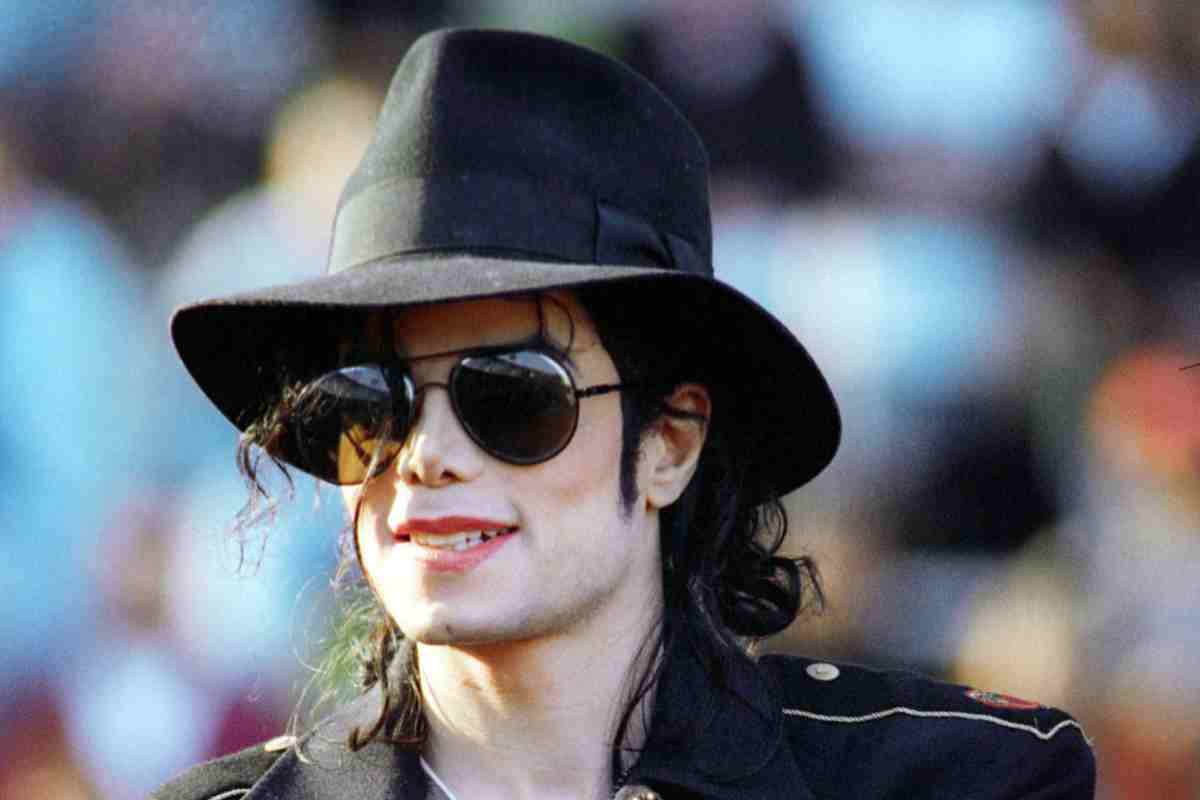
One of the bestselling artists of all time, his captivating performances and style continue to inspire generations.
The world of entertainment has been blessed with numerous talented individuals who have left an indelible mark on the industry. Among them are Celebrity Icons, individuals whose captivating performances and style continue to inspire generations.
One such iconic artist is Elvis Presley, widely regarded as one of the bestselling artists of all time. His unique blend of rockabilly, gospel, and rhythm & blues music captivated audiences worldwide, establishing him as a musical genius and cultural icon.
Elvis’s stage presence was nothing short of mesmerizing. With his distinctive voice, impressive dance moves, and electrifying energy, he could effortlessly command the attention of his audience. Whether performing rock ‘n’ roll classics or soulful ballads, Elvis had an uncanny ability to connect with his fans on a deep level.
His style was another aspect that endeared him to the public. From his signature slicked-back hair and flashy jumpsuits to his elaborate stage sets and choreography, Elvis’s performances were always visually stunning. His influence can be seen in countless other artists, from David Bowie to Lady Gaga, who have all cited Elvis as a major inspiration.
Throughout his career, Elvis was photographed countless times, both on and off stage. From the iconic ‘Elvis at Sun’ photo session, taken by legendary photographer William Eggleston, to the numerous public appearances and private gatherings captured by various paparazzi, Elvis’s image has been extensively documented.
Despite passing away in 1977, Elvis remains an enduring figure in popular culture. His music, movies, and image continue to be celebrated and emulated by fans around the world. His influence extends far beyond his own genre, with elements of rockabilly, country, and soul music all reflecting his innovative spirit.
In conclusion, Elvis Presley stands as a testament to the power of talent and charisma in shaping cultural icons. Through his captivating performances, timeless style, and enduring legacy, he continues to inspire generations to come.
Frida Kahlo – A Symbol of Resilience
- Frida Kahlo, a renowned Mexican artist, stands out as one of the world’s most photographed personalities, her iconic image having become synonymous with the concept of resilience.
- Her unyielding spirit and unwavering determination in the face of adversity have inspired countless individuals across the globe.
- Born in 1907, Frida Kahlo began creating art at a relatively young age, using it as a means to express her emotions and tell stories about her life.
- Her experiences with polio and a devastating bus accident had a profound impact on her artwork, infusing it with themes of physical pain and emotional struggle.
- Kahlo’s artistic style is characterized by the use of vibrant colors, symbolic imagery, and self-portraits that offer a glimpse into her inner world.
- The artist’s affinity for traditional Mexican clothing, jewelry, and adornments has also been incorporated into her artwork, serving as a celebration of her cultural heritage.
- Some of Frida Kahlo’s most famous works include “The Broken Column,” “What the Water Gave Me,” and “Self-Portrait with Thorn Necklace and Hummingbird,” each of which showcases her unique style and perspective.
- Kahlo’s artistic legacy extends beyond her own work, as she has inspired numerous artists, writers, and musicians to explore themes of identity, resilience, and the human experience.
- In 1953, Frida Kahlo married artist Diego Rivera, with whom she had a tumultuous relationship marked by periods of separation and infidelity.
- Kahlo’s health continued to decline in her later years, ultimately leading to her death on July 13, 1954, at the age of 47.
- Today, Frida Kahlo remains an enduring symbol of resilience, her artistic and personal struggles serving as a testament to the human capacity for strength and perseverance.
Some key aspects of Frida Kahlo’s life and art include
- Cultural heritage: Frida Kahlo’s affinity for traditional Mexican clothing, jewelry, and adornments is reflected in her artwork.
- Physical pain: Her experiences with polio and a bus accident had a profound impact on her artwork, infusing it with themes of physical pain and emotional struggle.
- Symbolic imagery: Kahlo’s use of symbols and metaphors in her artwork adds depth and meaning to her paintings.
- Self-portraiture: Frida Kahlo’s self-portraits offer a glimpse into her inner world, exploring themes of identity and the human experience.
- Resilience: Her unyielding spirit and determination in the face of adversity have inspired countless individuals across the globe.
As one of the world’s most photographed personalities, Frida Kahlo continues to captivate audiences with her iconic image, artistic talent, and enduring legacy as a symbol of resilience.
As a pioneering artist, her life and work are widely studied at institutions like Harvard University.
Celebrity Icons have always been a subject of great fascination for people around the world. From movie stars to musicians, politicians, and athletes, these individuals have a way of captivating our attention and becoming an integral part of popular culture.
One such celebrity icon who comes to mind is Marilyn Monroe. Born Norma Jeane Mortenson on June 1, 1926, in Los Angeles, California, she went on to become one of the most recognizable and iconic faces in Hollywood’s Golden Age. Her life and work are widely studied at institutions like Harvard University, where scholars and students analyze her performances, film roles, and impact on popular culture.
Marilyn Monroe’s rise to fame began in the early 1950s when she started landing small roles in films such as “Scudda Hoo! Scudda Hay!” (1948) and “The Asphalt Jungle” (1950). Her breakthrough performance came with her iconic role as Sugar Kane in the 1959 musical film “Some Like It Hot.” This film, which co-starred Tony Curtis and Jack Lemmon, cemented her status as a Hollywood sex symbol and earned her critical acclaim.
Monroe’s personal life was often scrutinized by the media, with her tumultuous marriage to baseball legend Joe DiMaggio making headlines. Her subsequent marriage to Arthur Miller, a celebrated playwright, also garnered significant attention. Despite facing numerous challenges and setbacks throughout her career, Monroe continued to captivate audiences with her unique blend of vulnerability, wit, and sophistication.
As a cultural icon, Marilyn Monroe’s impact extends far beyond the silver screen. She has inspired countless artists, designers, and writers, influencing fashion, music, and art for generations to come. Her signature style, characterized by a blend of Hollywood glamour and bohemian chic, continues to influence fashion trends to this day.
Monroe’s legacy extends into the realm of social commentary as well. Her struggles with mental health, body image, and sexism are now widely recognized and celebrated as part of her enduring appeal. As a symbol of female empowerment and resilience, Monroe remains an inspiring figure for women around the world.
In conclusion, Marilyn Monroe is an iconic celebrity who continues to captivate audiences with her enigmatic persona and unforgettable performances. Her life and work remain widely studied at institutions like Harvard University, offering valuable insights into the cultural, social, and historical contexts of her time.
Historical Figures
Mahatma Gandhi – The Father of Non-Violent Resistance
Mahatma Gandhi – The Father of Non-Violent Resistance
- Gandhi was born on October 2, 1869, in Porbandar, a small coastal town in what is now the state of Gujarat, India.
- He was trained as a lawyer in London and later worked in South Africa, where he developed his ideas about non-violent resistance to fight against racial oppression.
- Gandhi returned to India in 1915 and quickly became involved in the Indian independence movement from British rule.
- He believed that non-violent civil disobedience could be an effective means of challenging unjust laws and social norms, and he used this strategy throughout his life to fight for Indian independence and other causes.
- Gandhi was assassinated on January 30, 1948, but his legacy continues to inspire people around the world who are fighting for justice and equality.
Key Dates
- 1869: Mahatma Gandhi was born in Porbandar, India.
- 1893: Gandhi moved to South Africa and became involved in the Indian community there.
- 1915: Gandhi returned to India and began his involvement in the Indian independence movement.
Key Causes
Indian Independence Movement: Gandhi was a key leader of the movement for Indian independence from British rule.
Racial Equality in South Africa
Gandhi fought against racial oppression during his time in South Africa.
Nuclear Disarmament: Gandhi opposed nuclear weapons and advocated for disarmament.
Key Quotes
- “Be the change you wish to see in the world.”
- “An eye for an eye only ends up making the whole world blind.”
- “Live as if you were to die tomorrow. Learn as if you were to live forever.”
Legacy
Gandhi’s legacy continues to inspire people around the world who are fighting for justice and equality.
He is remembered as a champion of non-violent resistance and a advocate for human rights.
Gandhi’s inspiring legacy is celebrated around the world for his peaceful approach to fighting injustice.
Gandhi’s inspiring legacy is celebrated around the world for his peaceful approach to fighting injustice. He was a true champion of civil rights and freedom, using non-violent resistance as a means to challenge oppressive regimes.
Known as Mahatma Gandhi or “Great Soul”, he played a pivotal role in India’s struggle for independence from British rule. His commitment to justice and equality has inspired countless people across the globe.
Gandhi was born in Porbandar, India on October 2, 186 He began his life as a lawyer but soon became deeply involved in Indian nationalist movements. In 1915, he returned to India after spending over a decade in South Africa, where he had been fighting for the rights of Indians living there.
Gandhi’s most famous campaigns include the Non-Cooperation Movement, which called for civil disobedience and non-payment of taxes, and the Salt March, during which thousands of people marched to the sea to protest a tax on salt. His methods were often met with brutal force by British authorities but he never wavered in his commitment to non-violence.
In 1947, India finally gained independence from Britain and Gandhi’s legacy was cemented as a champion of peace and justice. He remained an important figure until his assassination on January 30, 1948, when he was shot by a Hindu nationalist. Today, Gandhi is remembered as one of the most inspiring figures of the 20th century.
His message of non-violent resistance continues to resonate around the world and his influence can be seen in leaders from Martin Luther King Jr. to Nelson Mandela. In conclusion, Gandhi’s enduring legacy serves as a powerful reminder that even the most seemingly impossible challenges can be overcome with courage, conviction and a commitment to justice.
Cleopatra – Ancient Egypt’s Enigmatic Queen
- Cleopatra, the last active pharaoh of Ancient Egypt, remains one of history’s most captivating and enigmatic figures.
- She was a member of the Ptolemaic dynasty, which was a Greek dynasty that ruled Egypt after the death of Alexander the Great in 323 BC.
- Cleopatra VII was born in 69 BC in Alexandria, Egypt, to Ptolemy XII Auletes and likely Cleopatra V Tryphaena. She ascended to the throne following her father’s death in 51 BC.
Key Events of Her Reign
- Cleopatra formed alliances with Julius Caesar and Mark Antony, two of Rome’s most powerful leaders, to secure Egypt’s position against rival powers and maintain its wealth.
- She famously had relationships with both Julius Caesar and Mark Antony, which were marked by politics, power struggles, and a desire for control over Egypt’s vast resources.
- Cleopatra’s reign was also marked by her efforts to promote Egyptian culture and maintain the country’s independence in the face of Roman expansion.
One of Cleopatra’s most enduring legacies is her association with Julius Caesar. The two formed a close relationship, which was rumored to be romantic in nature, but was likely driven by politics.
The End of Her Reign
- Cleopatra’s fortunes changed dramatically following the assassination of Julius Caesar in 44 BC. She and Mark Antony eventually formed a new alliance to counter the growing power of Octavian (later Augustus Caesar).
- The Battle of Actium in 31 BC marked the beginning of the end for Cleopatra and her allies as they were defeated by Octavian’s forces.
Cleopatra’s subsequent defeat and death have been immortalized through the works of ancient historians, including Plutarch and Josephus Flavius. Her legendary beauty and charm continue to captivate art lovers and scholars alike.
This powerful and intelligent leader continues to fascinate historians, with her life studied by institutions like Cambridge University.
The fascinating and enigmatic Cleopatra VII is one such historical figure who continues to captivate historians, scholars, and the general public alike.
Cleopatra VII was the last active pharaoh of Ancient Egypt, ruling from 51 BC until her death in 30 BC. She rose to power after the death of her father Ptolemy XII and quickly proved herself to be a shrewd and intelligent leader.
Her reign was marked by significant diplomatic efforts, as she sought to maintain Egypt’s independence and influence in a world dominated by the Roman Empire.
Cleopatra famously formed alliances with two of Rome’s most powerful leaders: Julius Caesar and Mark Antony. Her relationship with Julius Caesar resulted in the birth of their son Caesarion, while her romance with Mark Antony led to the famous Battle of Actium.
Despite her many accomplishments as a leader, Cleopatra’s legacy is often marred by rumors of her promiscuity and extravagance. However, historians argue that these depictions are largely exaggerated or fabricated by ancient sources who sought to discredit her.
Cleopatra’s life has been extensively studied by institutions such as Cambridge University, with many scholars analyzing the various sources available to reconstruct a more accurate picture of her life and reign.
One of the most enduring images associated with Cleopatra is that of the “Queen Nefertiti bust,” which depicts an ancient Egyptian queen with striking features that have been linked to Cleopatra. However, this has been disputed by some scholars who argue that the similarity between the two may be due to artistic license rather than actual resemblance.
Despite these ongoing debates and controversies, Cleopatra’s allure remains strong, captivating the imagination of people around the world and inspiring countless works of art, literature, and film.
In addition to her intelligence and strategic thinking, Cleopatra’s language skills were exceptional; she was known to have spoken multiple languages, including Egyptian hieroglyphs, Greek, and Latin.
The fascinating story of Cleopatra continues to captivate us to this day, making her one of the most photographed and studied figures in history, with a timeless allure that transcends time and geography.
- 10 Most Beautiful Cities In Switzerland - September 3, 2024
- 11 Most Charming Cities In Northern California - September 3, 2024
- 10 Largest Cities In Wisconsin - September 3, 2024

